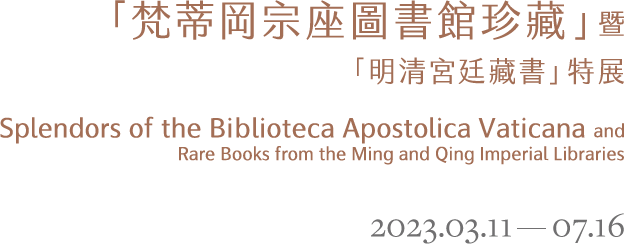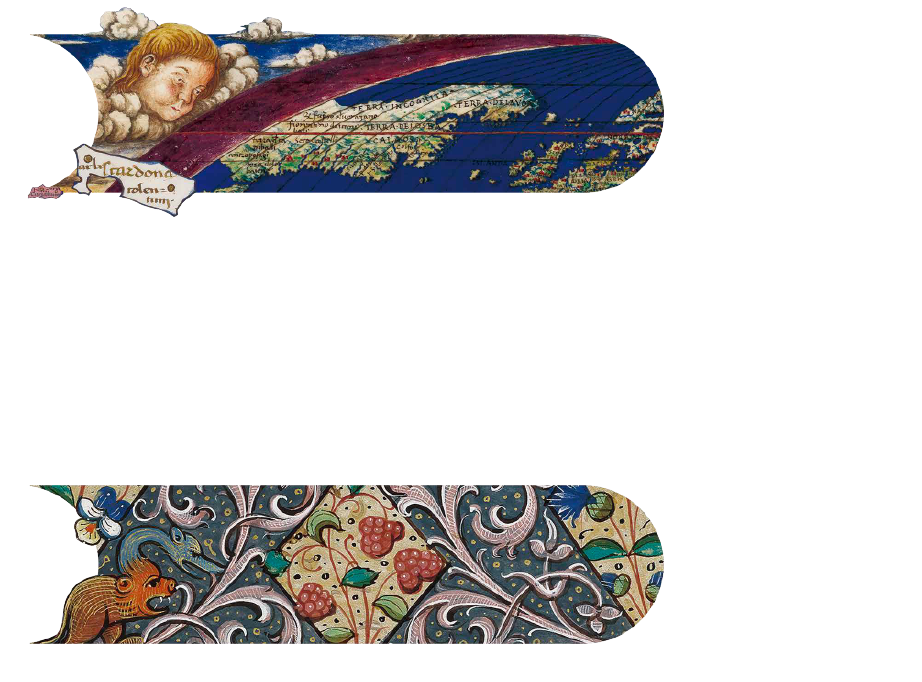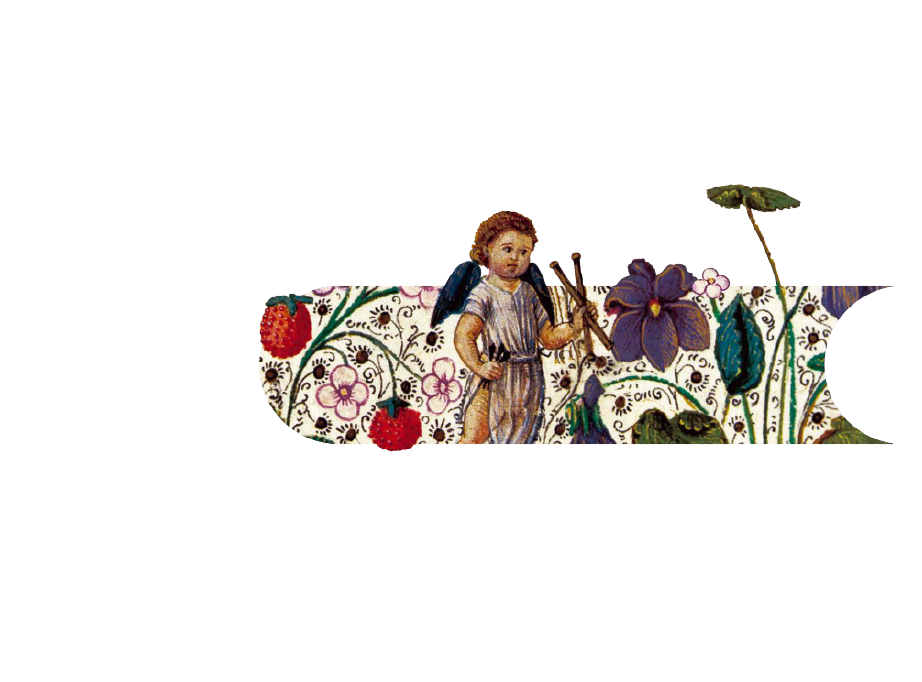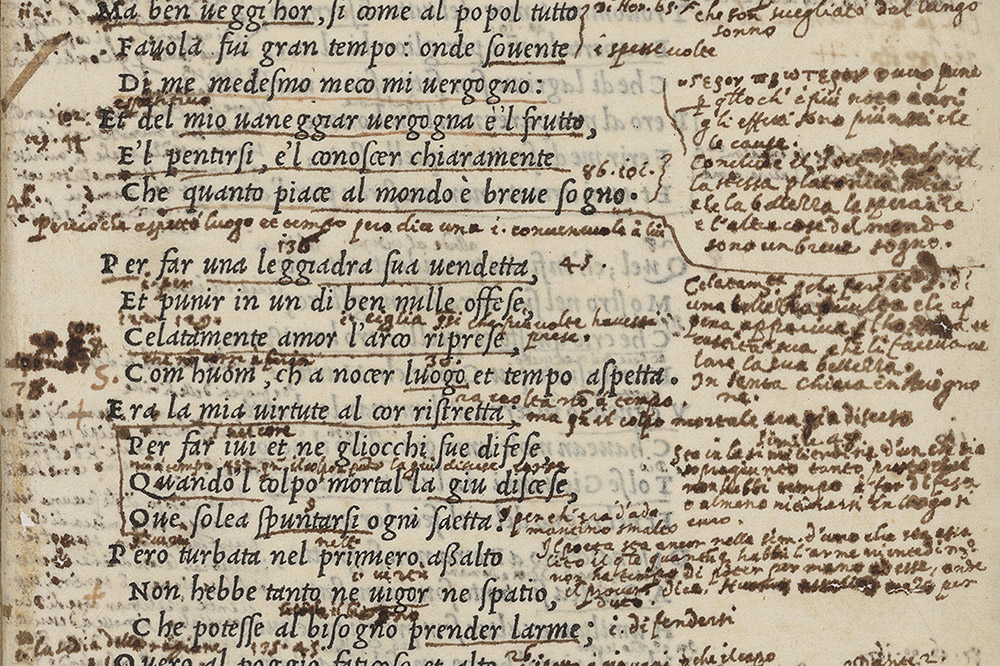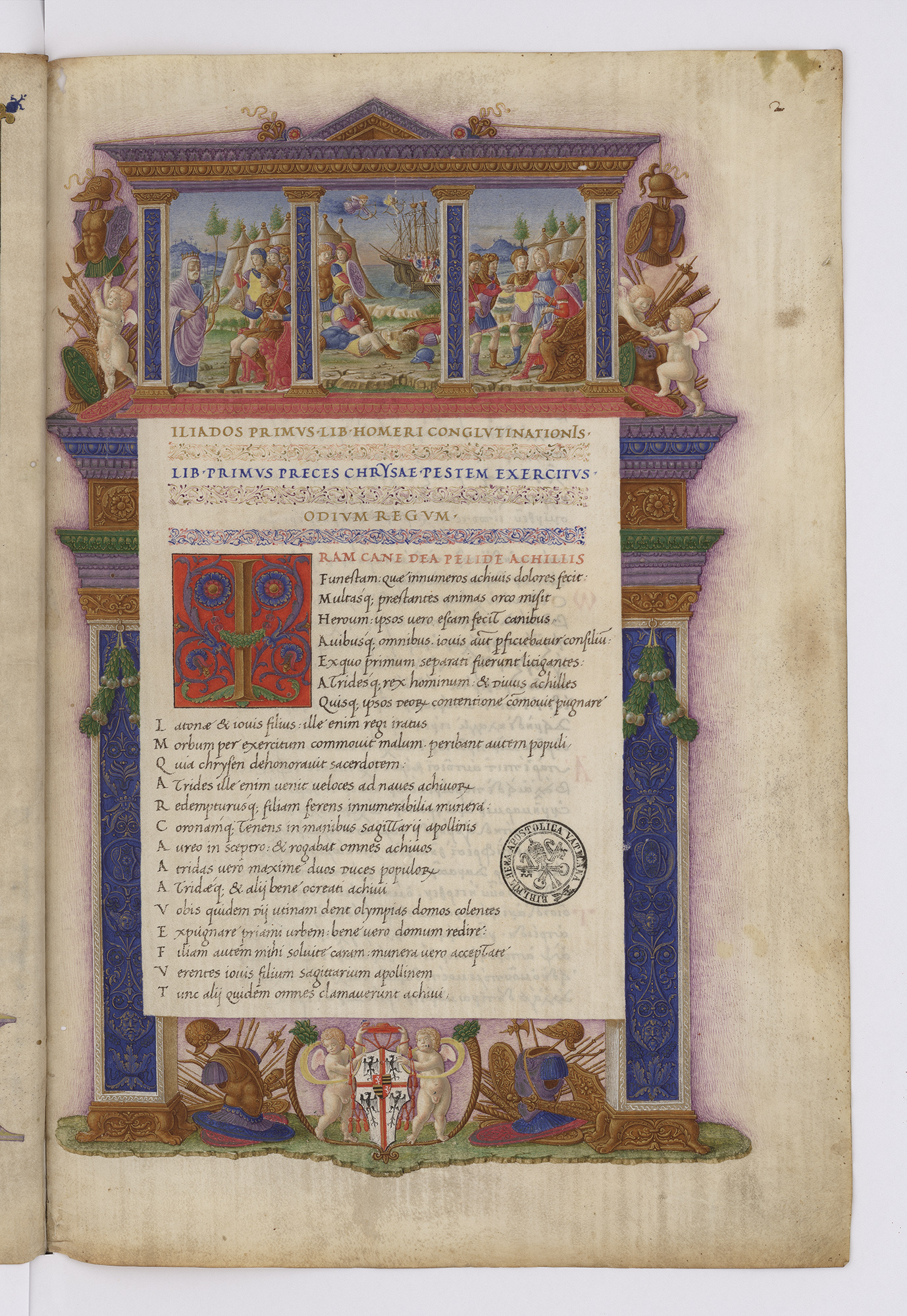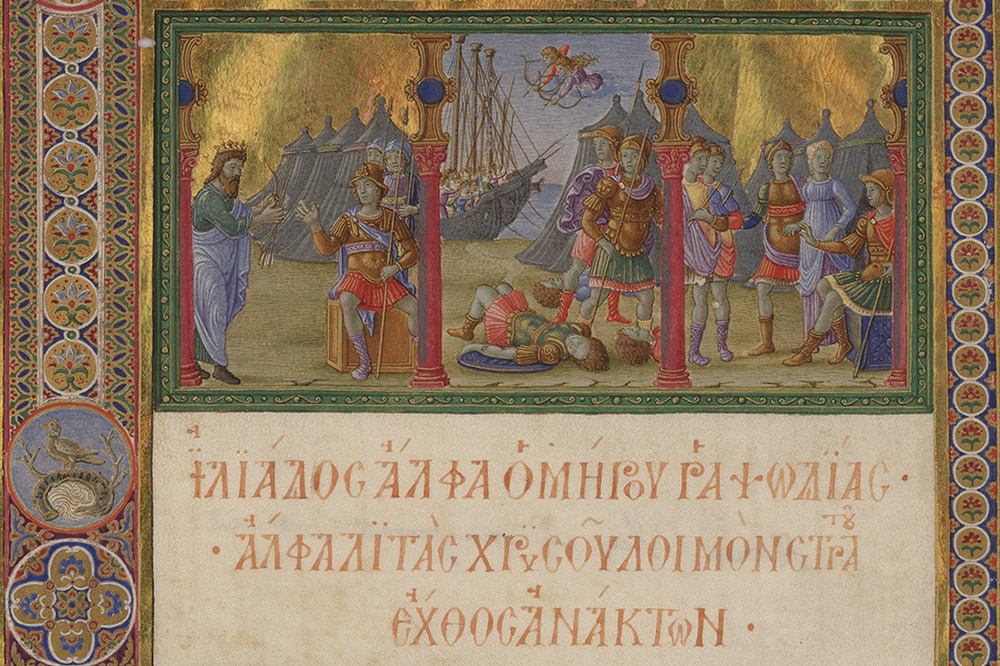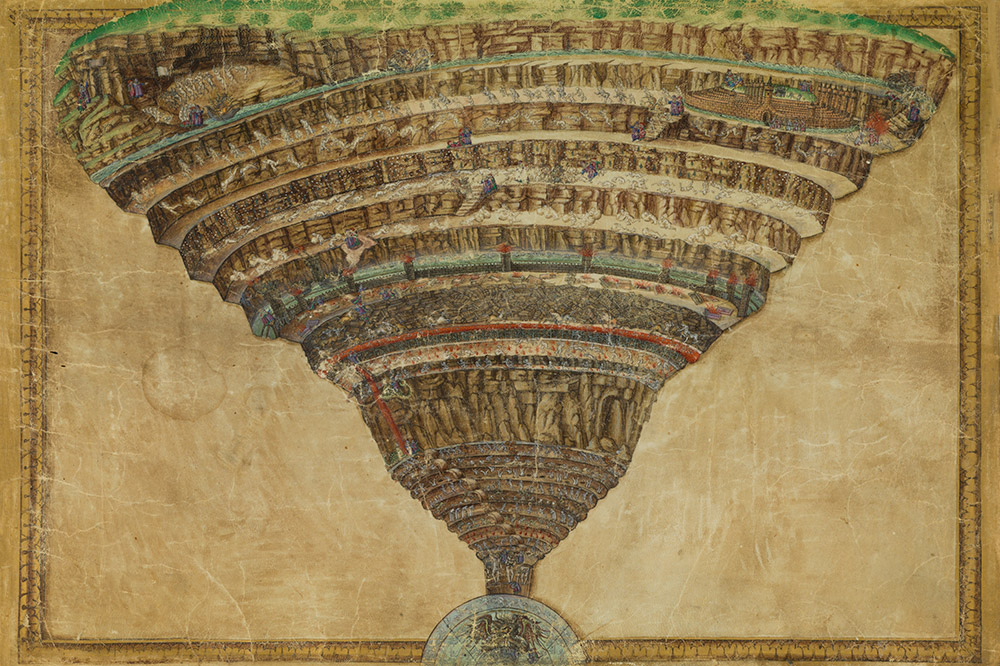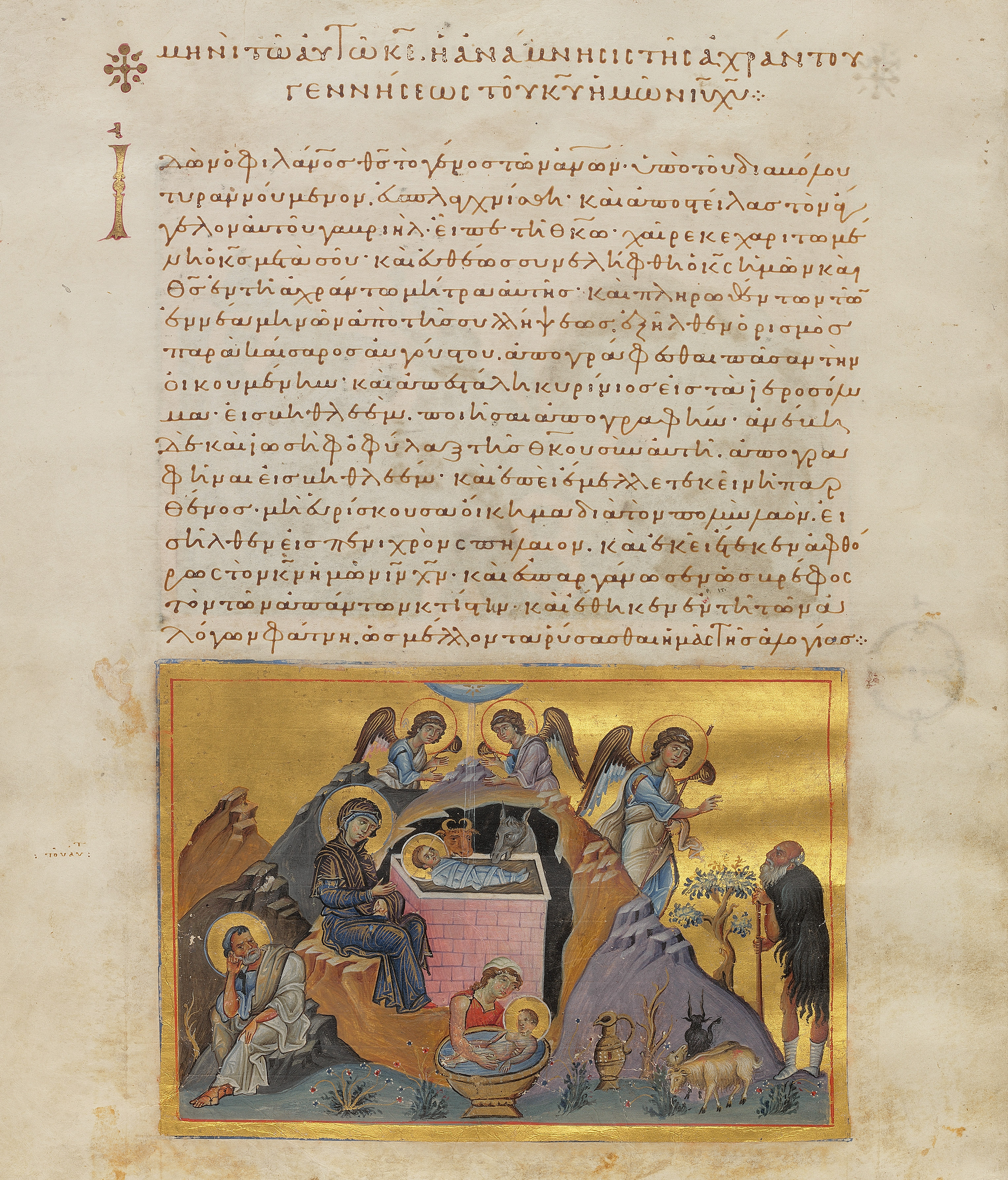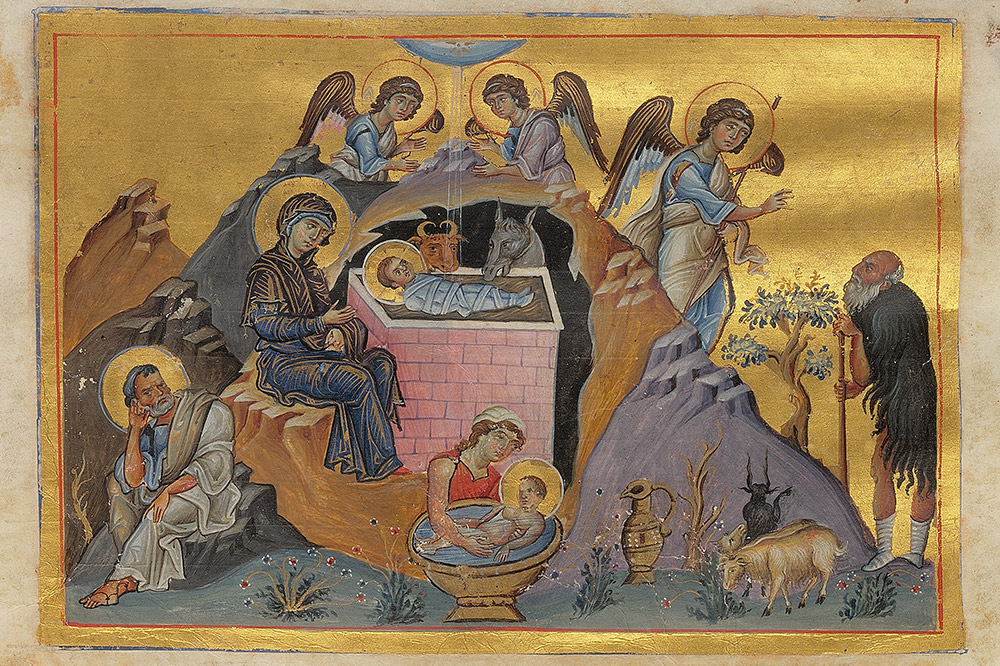The Construction of New Facilities and the Acquisitions of the 17th Century
Towards the end of the 16th century, the place intended for the Biblioteca, although some rooms had been added to the original ones, was no longer sufficient. The construction of new imposing facilities, built under the pontificate of Sixtus V (r. 1585-1590), allowed a new phase of development with further important acquisitions.
The patrimony of the Biblioteca Apostolica Vaticana was enriched with large collections. In 1623 2,500 manuscripts (Latin and Greek) and 5,000 printed books of the Bibliotheca Palatina of Heidelberg donated to Pope Gregory XV (r. 1621-1623) by the Duke of Bavaria Maximilian I (r. 1597-1623) arrived, and among them the Pal.lat.1071, from the 13th century, with a treatise on falconry written by the Holy Roman Emperor Frederick II (r. 1220-1250).
In 1657 Pope Alexander VII (r. 1655-1667) purchased the beautiful library of the Dukes of Urbino, of about 2,000 manuscripts (Latin, Greek and Hebrew) including many masterpieces in the history of art, such as the great Bible (Urb.lat.1-2) full of precious miniatures, or the Divine Comedy (Urb.lat.365) by Dante Alighieri (c. 1265-1321).
In 1689 Pope Alexander VIII (r. 1689-1691) purchased 2,300 manuscripts from the library of Queen Christina (r. 1632-1654) of Sweden, who had renounced the throne and converted to Catholicism by moving to Rome. The collection boasts volumes of great importance for their content, such as the Gelasian Sacramentary (Reg.lat.316) or for their artistic relevance, such as the Divine Comedy by Dante Alighieri (Reg.lat.1896) illustrated by Sandro Botticelli (1445-1510).
Le Cose Volgari (The Vernacular Poetry)
- Petrarch (Francesco Petrarca, 1304-1374)
- 1501|Venice|180×125×53 mm
- Aldine.III.2|Original|© Biblioteca Apostolica Vaticana
The Le Cose Volgari from the Biblioteca's Fondo Aldine (Aldine Collection) is interleaved; that is, it is bound by alternating a blank page with each printed page, and contains dense notes, attributed to the humanist Giulio Camillo Delminio (1480-1544) from Friuli and dating back to the first thirty years of the 16th century. Delminio's notes stand out in the context of the comments of the time on the Petrarch work for the wealth of references and sources mentioned. In the years between 1553 and 1560, also in Venice, these annotations were partially published, by the typographer Gabriele Giolito de Ferrari (1508-1578), as commentaries to several printed editions of the Canzoniere.
Iliade (Iliad)
- Omero (Homer)
- Greek and Latin|15th century|Rome|Parchment|427×295×115 mm
- Vat.gr.1626|Original|© Biblioteca Apostolica Vaticana
A bilingual copy of Homer's Iliad with the original Greek on the verso sides of the leaves and an incomplete, anonymous Latin translation on each corresponding recto. The Greek text was subscribed in Rome in May 1477 by the well-known Cretan scribe John Rhosos (?-1498). The scribe of the Latin version has been identified as Bartolomeo Sanvito of Padua (fl. 1435-1512). The coat of arms on f.1v, seen here on the page to the left, is that of Cardinal Francesco Gonzaga (1444-1483), who is also named in Rhosos' subscription. The miniatures, which are incomplete (as is the Latin text), were once also attributed to Sanvito, who was an artist as well as a scribe; however, they are now considered to be almost certainly the work of Gaspare da Padova (fl. 1466-1487).
Divina Commedia (Divine Comedy)
- Dante Alighieri (c. 1265-1321) With illustrations by Sandro Botticelli (1445-1510)
- Vernacular Italian|15th century|477×352 mm
- Reg.lat.1896|Image reprinting|© Biblioteca Apostolica Vaticana
The manuscript copy of Dante's Commedia was illustrate by Sandro Botticelli in the years of transition from a predominantly classicist inspiration to religious reflection linked to the Savonarolian presence. The form of the book in the mind of the person who designed it would look like an album. Each bifolio, laid out flat, should have brought the transcription of an entire canto to the recto. Botticelli's illustration on the verso is sort of a visual commentary, except the first cantica. Here is exposed the beginning of Inferno, which includes on the recto the map of Dante's journey, completed by the painter, and the verso with the scene of the dark forest and the meeting with Virgil (70-19 B.C.).
Menologio di Basilio II (Menologium of Basil II)
- 976-1025|364×284 mm
- Vat.gr.1613|Image reprinting|© Biblioteca Apostolica Vaticana
The Menologio di Basilio II contains short biographies of saints according to their feast days in the Byzantine liturgical calendar from September to February. Each concise biographical passage on the saint of a certain day is accompanied by a framed illustration with gold background on the same page. Eight artists collaborated to illustrate the text of a single scribe in Constantinople under the reign of Basil II (r. 976-1025). It preserves an outstanding testimony and repertoire of Byzantine art from the turn of the 11th century. The precious manuscript was donated to Pope Paul V (r. 1605-1621) in 1615 and became the treasure of the Biblioteca Apostolica Vaticana.
